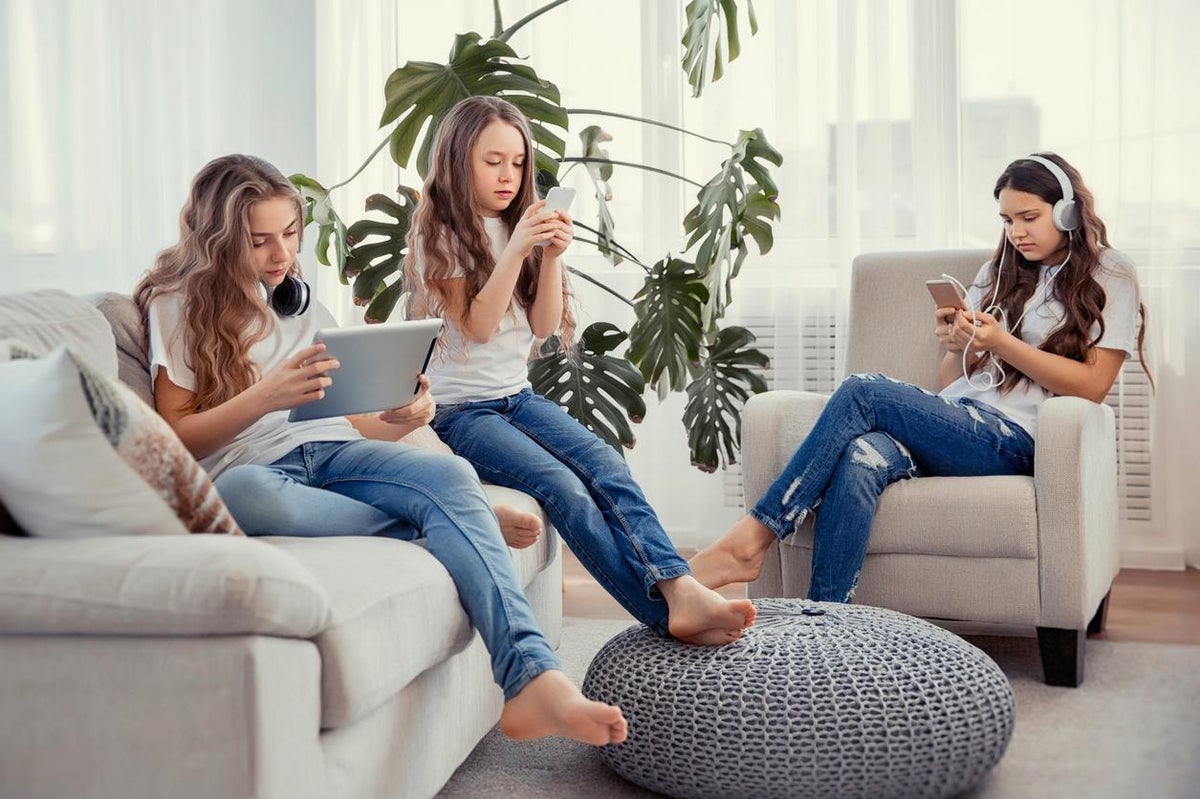Social Media Girls: The Rise, Influence, and Impact of a Digital Generation
Introduction: Who Are Social Media Girls?
In the 21st century, the phrase “social media girls” has taken on a cultural meaning far beyond its surface. These aren’t just young women with Instagram accounts or TikTok profiles—they represent a new wave of digital influencers, cultural trendsetters, and personal brands. Social media girls range from teenagers experimenting with their first selfies to high-powered content creators building multi-million dollar empires from their phones.
What sets social media girls apart is their mastery of platforms like Instagram, TikTok, YouTube, and even LinkedIn. Whether it’s fashion, fitness, beauty, mental health advocacy, or entrepreneurship, these girls are creating content that resonates with millions. They influence purchasing decisions, popularize slang, drive viral challenges, and often set the tone for online discourse.
This article explores the different dimensions of the “social media girls” phenomenon—from how they shape trends to the psychological implications of constant visibility. It’s more than just selfies and hashtags; it’s a digital movement redefining modern identity.
The Evolution of Social Media Girls: From MySpace to TikTok
It all started with the early social media days—think MySpace, Friendster, and the dawn of Facebook. Back then, girls created personalized pages filled with glittery graphics, song lyrics, and photos from digital cameras. These were the internet’s first taste of self-branding.
Then came Instagram, changing the game entirely. Suddenly, aesthetic feeds and curated content became status symbols. Girls no longer just posted for friends; they were performing for the algorithm. Hashtags like #OOTD (Outfit of the Day) became part of daily vernacular, and photo filters gave rise to an entirely new digital aesthetic.
TikTok took things even further, making virality accessible and creativity king. Short-form video allowed girls to showcase humor, dance, makeup skills, or commentary with a global reach. In less than 60 seconds, anyone could become a star. These platforms have not just changed how girls present themselves—they’ve altered how society sees youth, femininity, and influence.
The Aesthetic and Branding of Social Media Girls
The branding of social media girls is as intentional as that of any Fortune 500 company. Think of the carefully curated feeds, color palettes, and style guides. Aesthetics vary—some lean into the “clean girl” look, others prefer grunge, Y2K nostalgia, or “that girl” productivity vibes. No matter the genre, there’s a strong sense of visual storytelling at play.
But branding goes deeper than just colors. Social media girls know how to cultivate a persona. Whether it’s the shy bookworm, the gym rat, the skincare guru, or the fashion-forward minimalist, every detail supports their narrative. Their followers come to expect consistency, authenticity (or at least the illusion of it), and aspirational content.
Monetization has added a new layer to branding. Girls aren’t just creating content for fun—they’re building personal brands that attract sponsors, affiliate deals, and loyal fanbases. Even high schoolers now talk about “growing their niche” or “developing their brand voice,” often more fluently than business executives.
Influencer Culture and Monetization
One of the most significant shifts in the last decade is that social media girls have turned their passion into profit. Platforms like TikTok, YouTube, and Instagram allow monetization through creator funds, brand partnerships, and affiliate marketing. The average viewer might see a makeup routine, but behind the scenes, it’s a finely-tuned advertisement with multiple revenue streams.
Micro-influencers (those with 10k–100k followers) are often more effective in brand partnerships than celebrities. Why? Because their audience trusts them. Their recommendations feel like a best friend’s advice, not a corporate ad. This trust translates into real buying power.

The most successful social media girls have diversified income streams—merchandise lines, digital products, Patreon communities, and e-courses. Some even land book deals or TV appearances. In many ways, social media has become a launchpad for female entrepreneurship, creating new role models for financial independence.
Diversity, Inclusion, and Representation in the Digital Space
Social media has given a voice to girls who were previously underrepresented in mainstream media. Black, Indigenous, Asian, LGBTQ+, disabled, and plus-sized creators now have platforms to share their stories, struggles, and style unapologetically. For many viewers, these girls offer the first glimpse of someone who looks and lives like them in a glamorous, empowered way.
Movements like #BlackGirlMagic, #BodyPositivity, and #TransIsBeautiful were born and grew on social media thanks to the work of these girls. They challenged traditional beauty standards and disrupted the narrative of what it means to be influential.
However, representation is still uneven. Algorithms tend to favor certain looks, backgrounds, or content styles, which can disadvantage marginalized voices. Despite this, many girls continue to carve out space and demand attention with content that is not only aesthetic but deeply meaningful.
The Psychological Impact of Being a Social Media Girl
While social media can be empowering, it also has a dark side. Constant comparison, online hate, and pressure to perform can take a toll on mental health. Many social media girls experience anxiety, burnout, and even identity confusion.
Young girls growing up in this ecosystem often feel they must be “camera-ready” at all times. The quest for likes, shares, and comments can become obsessive. Some even tie their self-worth to their follower count or engagement rate, leading to destructive cycles of validation-seeking.
To combat this, some creators are becoming more transparent about their struggles. They talk openly about therapy, break from posting when needed, or encourage boundaries with tech. There’s also a growing trend toward “digital minimalism,” where even influencers advocate for screen breaks and offline fulfillment.
Social Media Girls and the Culture of Virality
Going viral is often seen as the holy grail, and social media girls have mastered this art. From trending dances to controversial takes, they understand what the algorithm wants—and they deliver. But virality is a double-edged sword.
A single viral moment can catapult someone from obscurity to fame, but it also opens them up to public scrutiny. Many girls have shared how overwhelming sudden internet attention can be. Some enjoy their 15 minutes of fame and vanish; others try to leverage the moment into long-term success.
Virality also shapes what content gets created. There’s a temptation to chase trends rather than stay authentic. Many girls walk a fine line between creative expression and pandering to the algorithm. Those who strike a balance tend to build more loyal communities over time.
Social Media Girls and Feminism: Empowerment or Exploitation?
There’s an ongoing debate: does the rise of social media girls represent feminist empowerment or digital exploitation? On one hand, it’s liberating. Girls are creating their own opportunities, sharing their truths, and defying traditional gatekeepers.
On the other hand, critics argue that the pressures of social media reinforce toxic beauty standards and hyper-sexualization. Young girls often feel compelled to post revealing photos or chase viral clout to feel validated.
The truth is, it’s complicated. For many girls, posting a bikini picture is not about objectification but body confidence. For others, creating sexy content is an act of autonomy and self-expression. Feminism on social media is not one-size-fits-all—it’s as diverse as the girls behind the screens.
How Social Media Girls Influence Pop Culture
Today, social media girls don’t just reflect pop culture—they shape it. Think of makeup trends like the “fox eye,” fashion styles like Y2K revival, or slang like “it girl” and “delulu.” These originate from the timelines of influencers and quickly spread worldwide.

Brands know this. That’s why major companies are shifting advertising budgets away from TV and print and toward influencer marketing. Social media girls have become the go-to trend forecasters and tastemakers of a new generation.
Even celebrities now copy them. You’ll often see A-listers adopting TikTok dance trends, lip-sync audios, or beauty routines that started with girls in their bedrooms. This reversal of influence marks a massive cultural shift—one where everyday girls can shape the world from their phones.
Social Media Girls Around the World
While much of the conversation focuses on American or Western creators, social media girls are a global phenomenon. From South Korea’s ulzzang influencers to Nigeria’s beauty vloggers and Brazil’s lifestyle creators, each region has its own flavor and focus.
In Asia, apps like Weibo, Douyin (Chinese TikTok), and LINE offer alternative platforms where social media girls thrive. In the Middle East, girls balance cultural expectations with personal expression. In Latin America, creators blend vibrant aesthetics with social commentary.
Despite cultural differences, the core remains the same: girls using digital tools to express, empower, and evolve. This globalization also fosters cross-cultural collaboration and understanding, making the internet a more interconnected place.
Social Media Girls and the Future of Digital Identity
Looking ahead, social media girls will continue to play a key role in shaping digital identity. As the metaverse, augmented reality (AR), and artificial intelligence (AI) enter the mainstream, expect to see new forms of content, self-expression, and influence emerge.
Virtual influencers, AI-generated avatars, and enhanced AR filters may blur the lines between real and digital even more. Social media girls are often the first adopters of these tools, setting new norms around identity and authenticity.
In the future, we may also see a shift toward deeper community-building—private group chats, subscription-based content, and IRL (in real life) meetups. As followers crave more intimacy and less noise, social media girls will adapt and innovate, staying ahead of the curve.
Conclusion: The Power and Responsibility of Social Media Girls
The rise of social media girls is one of the most defining shifts in modern digital culture. They are artists, activists, businesswomen, and community leaders—all rolled into one. With a smartphone and a vision, they’ve created movements, challenged stereotypes, and built entire industries from scratch.
But with great power comes great responsibility. As the world watches, these girls must navigate the pressures of performance, the risks of exploitation, and the complexities of influence. They’re not just content creators—they’re cultural architects.
To dismiss social media girls as superficial is to misunderstand the world we live in. They are the voice of a generation, the reflection of digital evolution, and a force that will continue to shape our culture for years to come. Whether you follow them or not, one thing is clear: the era of the social media girl has only just begun.




